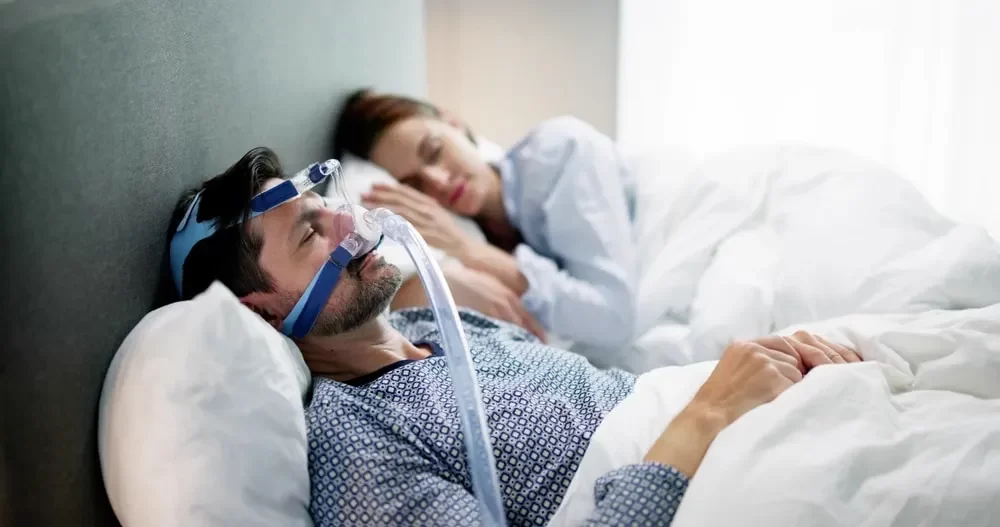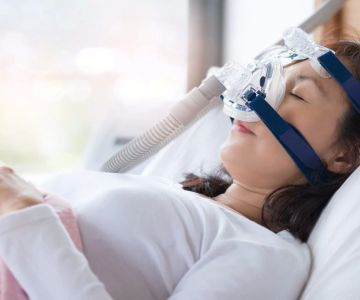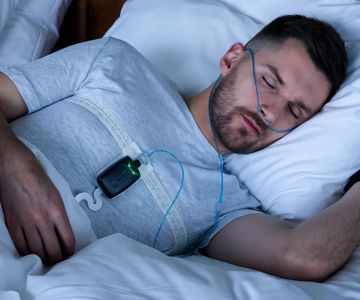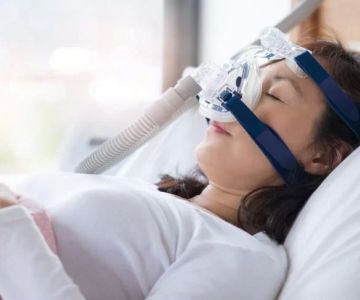
- Understanding Sleep-Disordered Breathing
- Common Types of Sleep-Disordered Breathing
- Diagnosing Sleep Apnea
- Conventional Treatments for Sleep-Disordered Breathing
- Innovative Therapies and Emerging Treatments
- Lifestyle Changes to Manage Sleep-Disordered Breathing
- A Personal Story of Overcoming Sleep Apnea
- Learn More About Effective Treatments
Understanding Sleep-Disordered Breathing
Sleep-disordered breathing encompasses a range of conditions characterized by abnormal breathing patterns during sleep. These disruptions can significantly impact overall health, quality of life, and daily functioning. Understanding the underlying causes and effects of sleep-disordered breathing is essential for effective management and treatment.
What is Sleep-Disordered Breathing?
Sleep-disordered breathing includes conditions like obstructive sleep apnea (OSA), central sleep apnea (CSA), and other less common forms. These conditions involve interruptions in breathing that can occur multiple times throughout the night, leading to fragmented sleep and decreased oxygen levels in the blood.
Impact on Health
Untreated sleep-disordered breathing can lead to a variety of health issues, including cardiovascular problems, daytime fatigue, cognitive impairments, and an increased risk of accidents. It also affects mental health, contributing to anxiety and depression.
Common Types of Sleep-Disordered Breathing
There are several types of sleep-disordered breathing, each with distinct characteristics and treatment approaches.
Obstructive Sleep Apnea (OSA)
OSA is the most common form, caused by a physical blockage of the airway, usually when the soft tissue in the back of the throat collapses during sleep. Symptoms include loud snoring, gasping, and choking sensations.
Central Sleep Apnea (CSA)
CSA occurs when the brain fails to send proper signals to the muscles that control breathing. Unlike OSA, CSA is not caused by a physical blockage, and it is often associated with underlying medical conditions such as heart failure or stroke.
Mixed Sleep Apnea
Mixed sleep apnea is a combination of both obstructive and central sleep apnea, presenting symptoms of both types. Treatment typically addresses both the physical blockage and the neurological aspects.
Diagnosing Sleep Apnea
Accurate diagnosis is crucial for effective treatment of sleep-disordered breathing. Various diagnostic tools and assessments help determine the presence and severity of the condition.
Sleep Studies
Polysomnography, commonly known as a sleep study, is the gold standard for diagnosing sleep apnea. It monitors various body functions during sleep, including brain activity, eye movement, heart rate, and breathing patterns.
Home Sleep Apnea Tests
For some patients, home sleep apnea tests provide a convenient alternative to in-lab studies. These tests typically measure airflow, breathing patterns, and oxygen levels.
Consultation with a Specialist
Consulting with a sleep specialist can help interpret test results and develop a personalized treatment plan based on the specific type and severity of sleep-disordered breathing.
Conventional Treatments for Sleep-Disordered Breathing
Several established treatments effectively manage sleep-disordered breathing, particularly obstructive sleep apnea.
Continuous Positive Airway Pressure (CPAP)
CPAP is the most common treatment for OSA. It involves wearing a mask that delivers a constant stream of air to keep the airway open during sleep. CPAP is highly effective but requires consistent use and proper fitting.
Oral Appliances
Dental devices designed to keep the airway open by repositioning the jaw or tongue can be an alternative for those who cannot tolerate CPAP. These appliances are custom-fitted by dental professionals.
Surgical Options
Surgery may be necessary for individuals with severe sleep apnea or anatomical abnormalities. Procedures can include uvulopalatopharyngoplasty (UPPP), maxillomandibular advancement, or nasal surgeries to remove obstructions and enlarge the airway.
Innovative Therapies and Emerging Treatments
Advancements in medical technology have introduced new therapies for managing sleep-disordered breathing, offering additional options for patients.
Adaptive Servo-Ventilation (ASV)
ASV is a type of positive airway pressure therapy that adjusts the pressure based on the patient's breathing patterns. It is particularly useful for treating complex sleep apnea and central sleep apnea.
Hypoglossal Nerve Stimulation
This therapy involves a surgically implanted device that stimulates the hypoglossal nerve to control tongue movement, preventing airway blockage during sleep.
Positional Therapy
Positional therapy focuses on changing the patient's sleep position to reduce apnea events. Devices and strategies help keep individuals from sleeping on their backs, where airway obstruction is more likely.
Lifestyle Changes to Manage Sleep-Disordered Breathing
In addition to medical treatments, certain lifestyle modifications can significantly improve sleep-disordered breathing symptoms.
Weight Management
Maintaining a healthy weight reduces the risk of airway obstruction and improves overall sleep quality. Weight loss through diet and exercise is often recommended for overweight individuals with sleep apnea.
Avoiding Alcohol and Sedatives
Alcohol and sedative medications relax the muscles in the throat, increasing the likelihood of airway collapse. Limiting or avoiding these substances can help manage symptoms.
Establishing a Regular Sleep Schedule
Maintaining consistent sleep patterns enhances sleep quality and reduces the frequency of apnea episodes. Establish a regular bedtime routine and ensure adequate sleep each night.
A Personal Story of Overcoming Sleep Apnea
Mark, a 42-year-old software engineer, struggled with severe sleep apnea for years. His loud snoring and frequent awakenings disrupted his sleep and strained his relationships. After a sleepless night led to a near-accident at work, Mark decided to seek professional help. He visited Dentistry Toothtruth, where he underwent a comprehensive sleep study. Based on the diagnosis, Mark was prescribed a CPAP machine and provided with lifestyle recommendations. With consistent use of CPAP and adopting healthier habits, Mark's sleep quality improved dramatically, enhancing his overall health and well-being.
Learn More About Effective Treatments
If you or a loved one are experiencing symptoms of sleep-disordered breathing, it's essential to seek professional advice and explore the available treatment options. Effective management can lead to better sleep, improved health, and a higher quality of life.
Visit Dentistry Toothtruth to discover comprehensive treatment solutions and expert guidance tailored to your specific needs. Treatment for sleep-disordered breathing is within reach – take the first step towards restful nights and healthier days today.







 Orthodontics Exclusively3.0 (39 review)
Orthodontics Exclusively3.0 (39 review) Mountainside Dental Group - Rancho Santa Margarita4.0 (117 review)
Mountainside Dental Group - Rancho Santa Margarita4.0 (117 review) Western Dental & Orthodontics3.0 (328 review)
Western Dental & Orthodontics3.0 (328 review) Panacea Dental5.0 (65 review)
Panacea Dental5.0 (65 review) Orlando Family Dentistry, LLC5.0 (16 review)
Orlando Family Dentistry, LLC5.0 (16 review) Long Grove Dental5.0 (1022 review)
Long Grove Dental5.0 (1022 review) The Importance of Oral Health Education During Pregnancy for a Healthy Pregnancy
The Importance of Oral Health Education During Pregnancy for a Healthy Pregnancy Best Tips for Brushing Your Teeth Properly for Healthy Gums: Essential Techniques for Oral Health
Best Tips for Brushing Your Teeth Properly for Healthy Gums: Essential Techniques for Oral Health Why Skipping Dental Checkups Can Lead to Bigger Oral Health Problems
Why Skipping Dental Checkups Can Lead to Bigger Oral Health Problems Advantages of Porcelain Dental Restorations
Advantages of Porcelain Dental Restorations How Can Diabetes Cause Tooth and Gum Problems? Preventing and Managing Oral Health Issues
How Can Diabetes Cause Tooth and Gum Problems? Preventing and Managing Oral Health Issues Healthy Habits for Promoting Good Oral Health and Hygiene: Tips for a Healthy Smile
Healthy Habits for Promoting Good Oral Health and Hygiene: Tips for a Healthy Smile